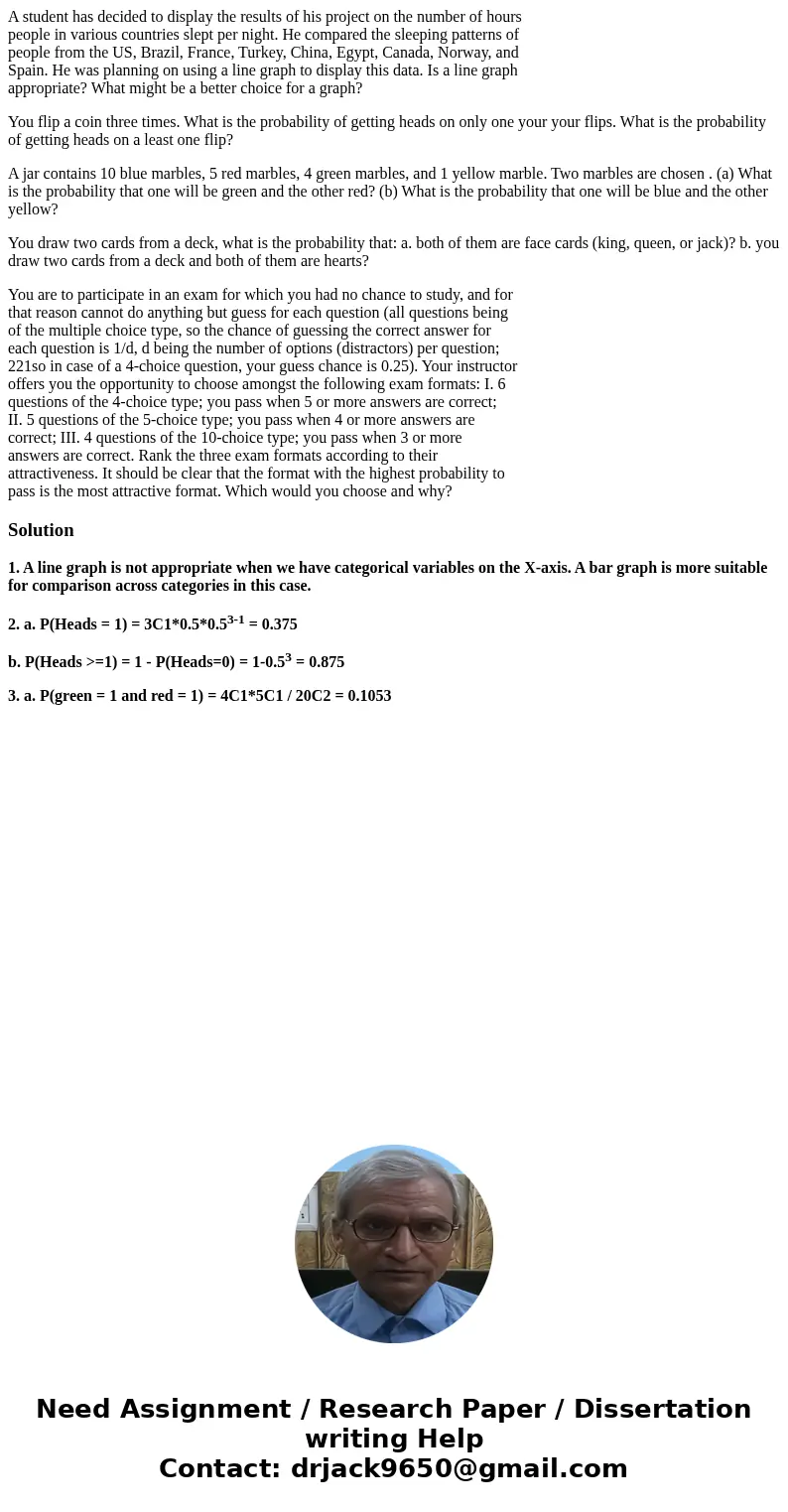A student has decided to display the results of his project
A student has decided to display the results of his project on the number of hours
people in various countries slept per night. He compared the sleeping patterns of
people from the US, Brazil, France, Turkey, China, Egypt, Canada, Norway, and
Spain. He was planning on using a line graph to display this data. Is a line graph
appropriate? What might be a better choice for a graph?
You flip a coin three times. What is the probability of getting heads on only one your your flips. What is the probability of getting heads on a least one flip?
A jar contains 10 blue marbles, 5 red marbles, 4 green marbles, and 1 yellow marble. Two marbles are chosen . (a) What is the probability that one will be green and the other red? (b) What is the probability that one will be blue and the other yellow?
You draw two cards from a deck, what is the probability that: a. both of them are face cards (king, queen, or jack)? b. you draw two cards from a deck and both of them are hearts?
You are to participate in an exam for which you had no chance to study, and for
that reason cannot do anything but guess for each question (all questions being
of the multiple choice type, so the chance of guessing the correct answer for
each question is 1/d, d being the number of options (distractors) per question;
221so in case of a 4-choice question, your guess chance is 0.25). Your instructor
offers you the opportunity to choose amongst the following exam formats: I. 6
questions of the 4-choice type; you pass when 5 or more answers are correct;
II. 5 questions of the 5-choice type; you pass when 4 or more answers are
correct; III. 4 questions of the 10-choice type; you pass when 3 or more
answers are correct. Rank the three exam formats according to their
attractiveness. It should be clear that the format with the highest probability to
pass is the most attractive format. Which would you choose and why?
Solution
1. A line graph is not appropriate when we have categorical variables on the X-axis. A bar graph is more suitable for comparison across categories in this case.
2. a. P(Heads = 1) = 3C1*0.5*0.53-1 = 0.375
b. P(Heads >=1) = 1 - P(Heads=0) = 1-0.53 = 0.875
3. a. P(green = 1 and red = 1) = 4C1*5C1 / 20C2 = 0.1053

 Homework Sourse
Homework Sourse